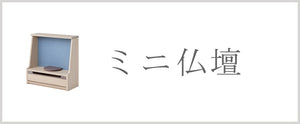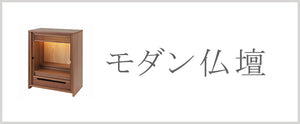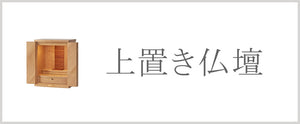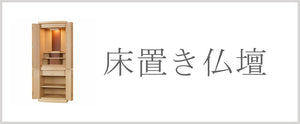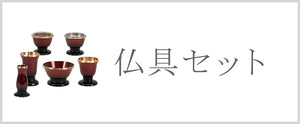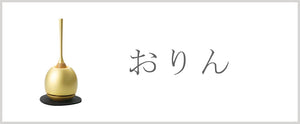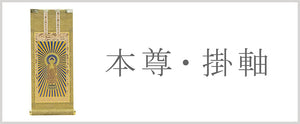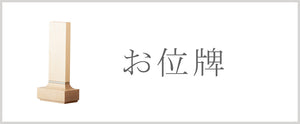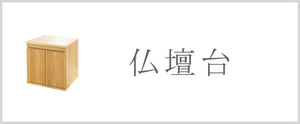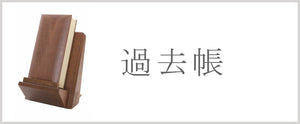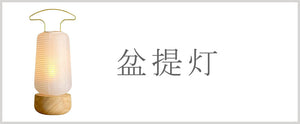Last updated:
Release date:
These days, more and more people are living in apartments.
Many people are probably troubled by not being able to place a Buddhist altar.
It is not necessary to have a Buddhist altar.
The important thing is to perform appropriate memorial services and face the deceased.
Recently, there are ways to offer memorial services without any burden.
In this article, we will explain a new method of memorial service that is suited to modern lifestyles that do not require the use of Buddhist altars.
Why have a Buddhist altar?
When we think of a Buddhist altar, we tend to think of it as a place to enshrine the memorial tablets and photographs of deceased family members.
However, the original meaning of a Buddhist altar is "to worship Buddha."
It is like a small temple within the home, and is also a place to express daily gratitude to Buddha and ancestors.
For some people, it may be a place where they can face themselves.
Approximately 80% of households in apartment complexes and other multi-unit housing do not have a Buddhist altar.
According to the results of a survey conducted by In Blooms Co., Ltd. regarding the placement of Buddhist altars, it has become clear that in recent years, 60% of multi-person households do not have a Buddhist altar.
Even in households where funerals are Buddhist, 54.3% do not have a Buddhist altar.
In apartment complexes and other multi-unit housing, the number of households that do not have a Buddhist altar has increased to "about 80%."
Nowadays, there is a noticeable trend away from Buddhist altars, and it is becoming more common not to have one.
Reasons for the decline of Buddhist altars
The reasons for moving away from Buddhist altars vary from household to household, but there are five main reasons.
Size
The size of the Buddhist altar is often a problem, and even the most popular floor-standing Buddhist altars are generally around 120 to 140 cm in height.
Amount
The price of a Buddhist altar varies depending on the material, craftsmanship, and country of production, but the most popular range is 200,000 to 300,000 yen.
There are many more expensive Buddhist altars, and the cost is often an issue.
Placement
In recent years, many homes do not have a Buddhist altar, and the lack of space in small homes is also a reason for not having a Buddhist altar.
Design
In cases where one inherits one's parents' Buddhist altar, in addition to the reasons mentioned above, there seems to be the problem that the design does not fit in with the living environment.
Even when purchasing a new Buddhist altar, many people believe that the very existence of a Buddhist altar will not match the interior of their room.
Whether or not you have religious faith
Some people just don't have much faith in the first place.
However, statistics show that people who do not have a Buddhist altar "tend to feel that they have not offered sufficient memorial services for their ancestors and deceased loved ones," so many people seem to want to at least offer memorial services for relatives and family members who have been particularly kind to them.
You can hold a memorial service with just a photo frame and flowers.

The mini Buddhist altar HAJIME is compact and has a small depth, so it can be placed in a variety of places.
For example, if you are concerned about size, you may want to consider a compact type (including for keeping at home) .
These days, there are many small Buddhist altars available, including those that can be placed inside existing furniture such as sideboards, those designed with doors on either side so they can be placed in the corner of a room, and even those that can fit inside a shallow bookshelf.
There are also Buddhist altars with excellent designs that blend in with modern interiors, and a variety of Buddhist altars that are suited to living environments are now appearing.
Also, Buddhist altars are often thought of as being expensive, costing hundreds of thousands of yen, but recently it is not uncommon to find one that can be purchased for around 10,000 yen.
You are also free to decorate and combine the altar however you like.
Memorial services can be held with simple things like just an ihai, a photograph, or flowers.
If you have the feeling that you cherish the deceased, that "there is a space there with someone important to me," then you can pray.
Living with the feeling of closeness to the deceased even without a Buddhist altar
As we have explained so far, it is possible to live your life feeling close to your deceased loved ones even if you do not have a traditional large Buddhist altar.
Let's review the meaning of having a Buddhist altar and what modern Buddhist altars look like.
Reasons for placing a Buddhist altar
The Buddhist altar is for worshiping Buddha.
It is a small temple within the home and also a place where people can express their gratitude to their ancestors on a daily basis.
The state of modern Buddhist altars
However, in modern times, many households do not or cannot have a Buddhist altar, and approximately 80% of apartment complexes and other multi-unit housing do not have one.
The reasons for this are thought to be related to five issues: size, price, location, design, and whether or not the person is religious.
To solve these problems, various types of Buddhist altars are now being designed, from inexpensive, small altars that fit naturally into a room to highly designed altars that match the interior decor.
Alternatively, memorial services can be held without having a Buddhist altar, such as with flowers or photographs.
Times have changed, and many people can no longer afford to place large Buddhist altars like those of the past.
However, the desire to offer prayers for the relatives, ancestors, and Buddha who have looked after you remains unchanged. If you feel this way, why not try looking for a new type of Buddhist altar?
Nagomi Kobo TOP page is here >


